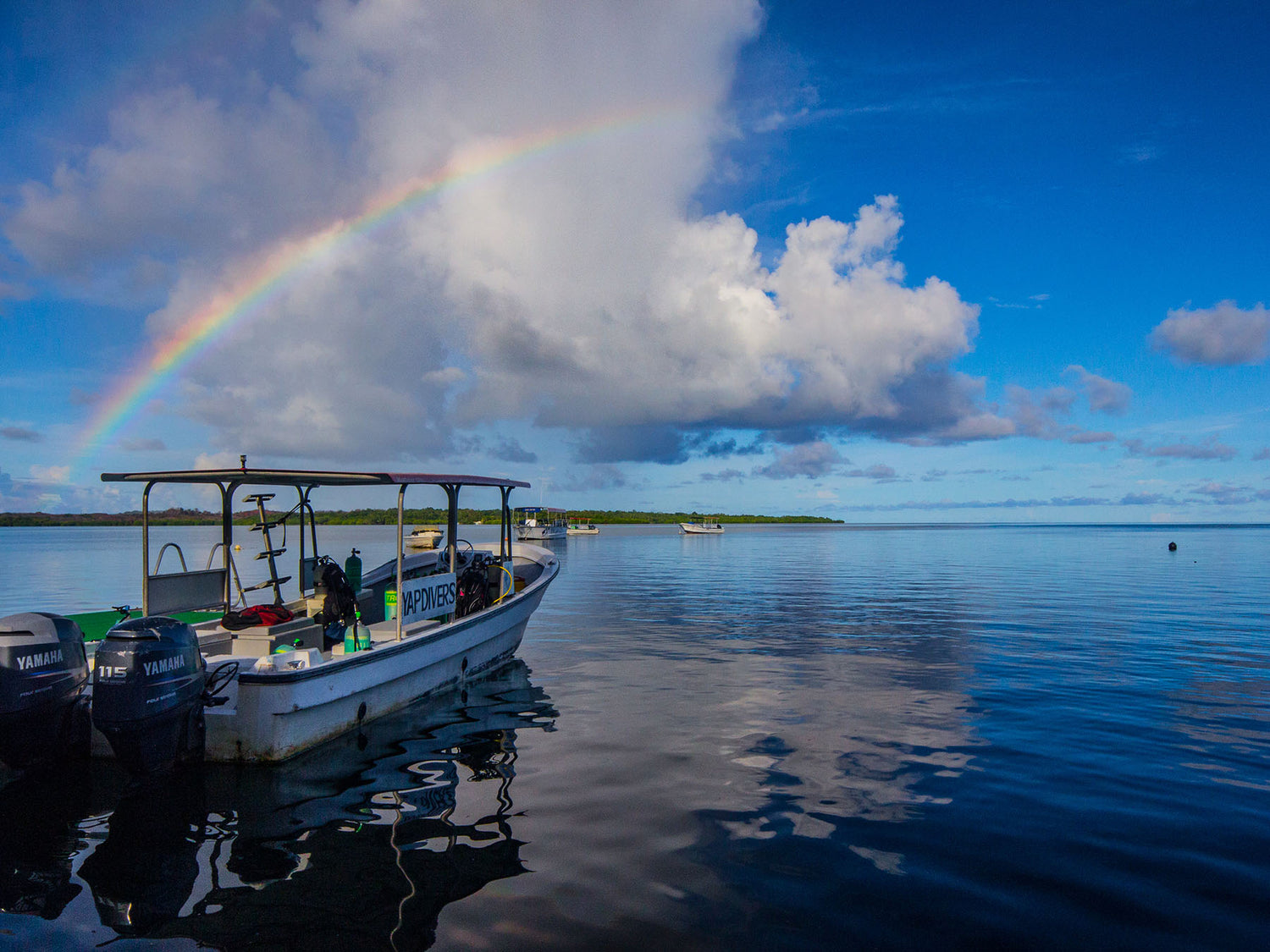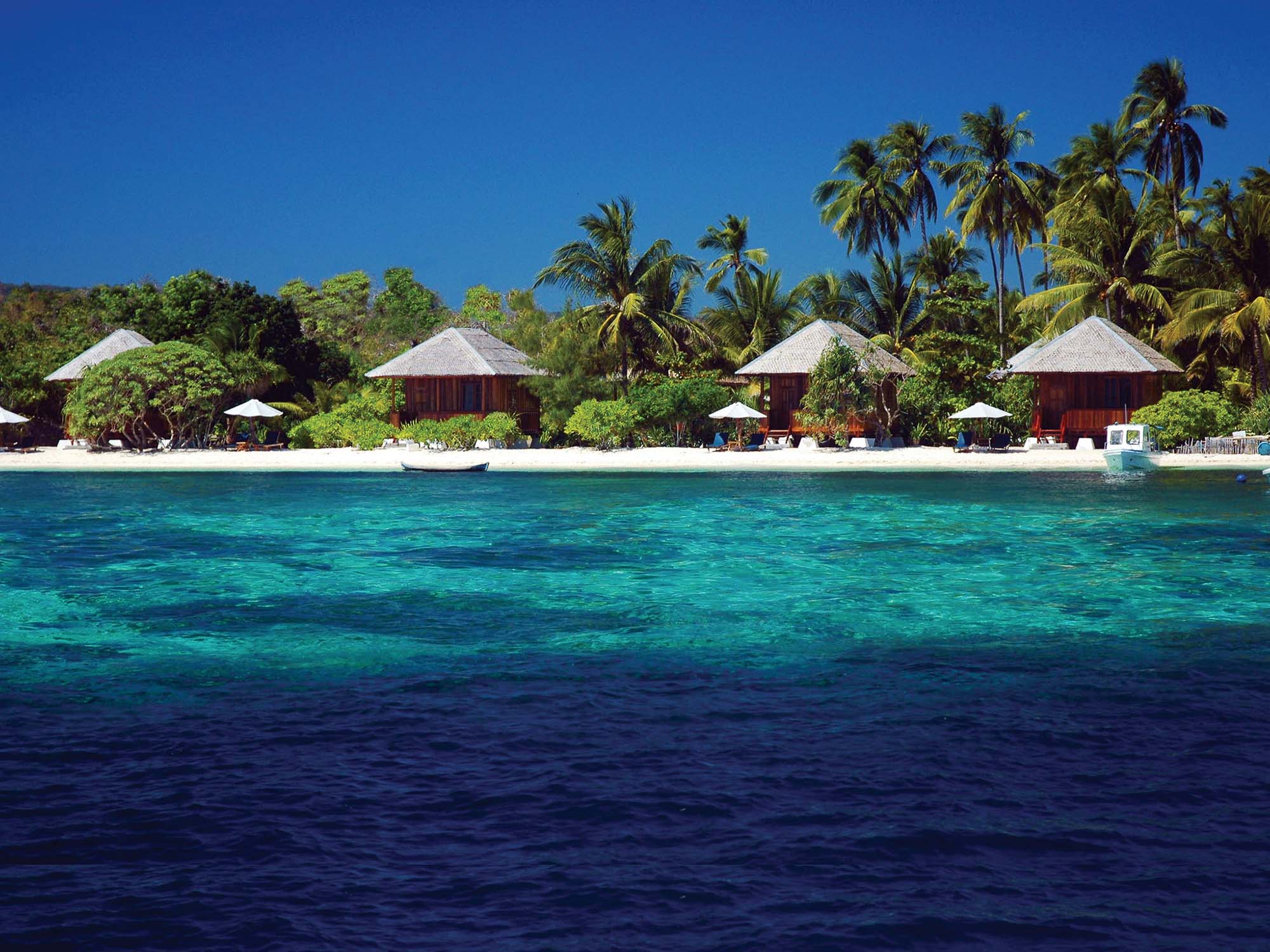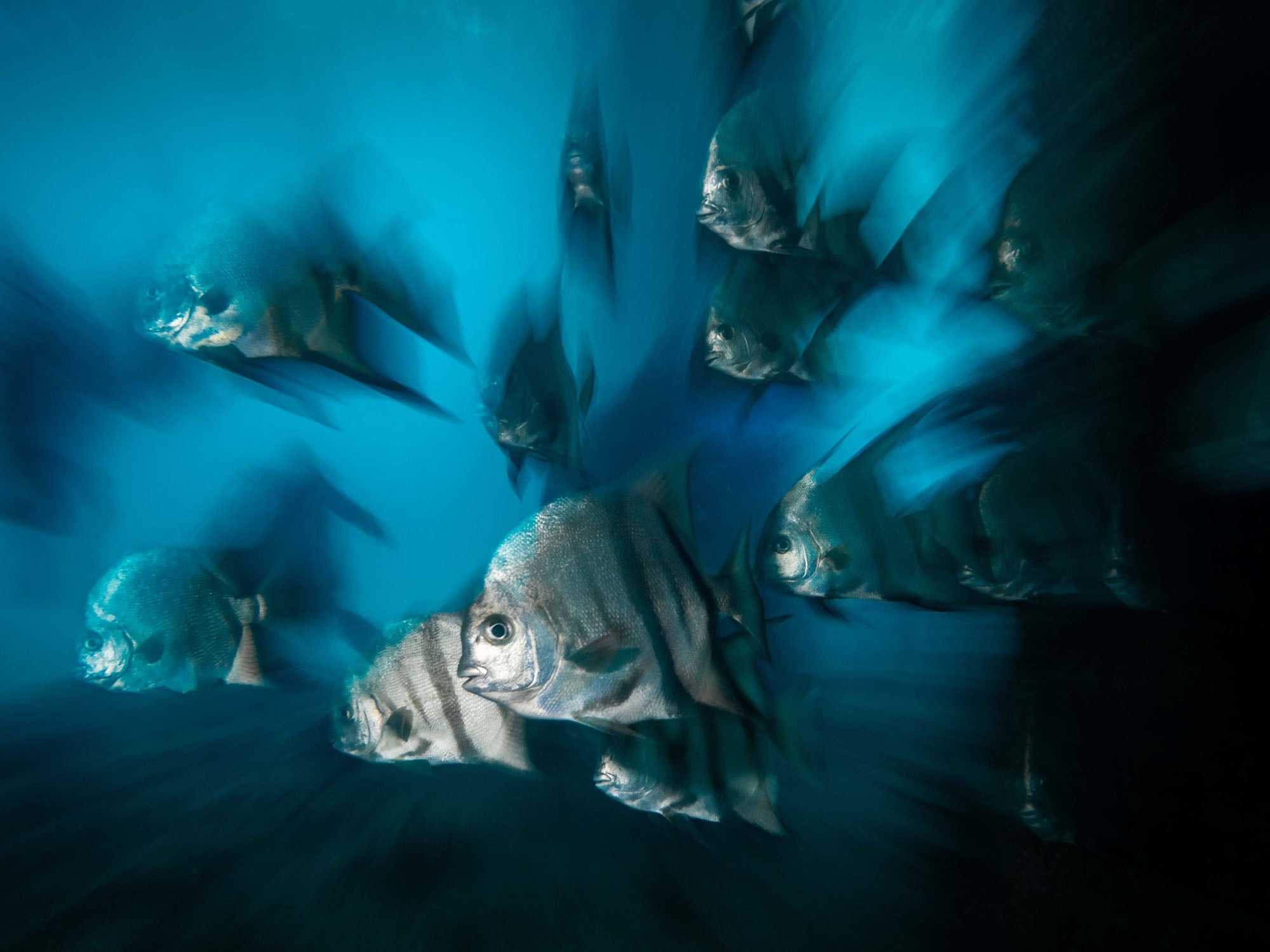All Images © Steve Miller
Why Dive Yap?
Yap is seldom visited, yet its waters offer the underwater photographer many choices of subjects.
This is one of the few places in the world where getting close to large manta rays is virtually guaranteed. They are often seen cruising in the distance, Yap has incredible visibility. But there are also well known cleaning stations where the mantas will hover in very shallow water as the reef fish come up to clean parasites off of them. Divers will get into position and wait for the mantas to come in and pose.
Shark experiences are also a guarantee, as are anemones with their resident clownfish, day octopus, and a myriad of fish and invertebrates, as well as hard and soft corals.
The diving experience is very personal - you will not be plagued by other boats or large groups of people. There are barely 100 hotel rooms on the whole island, and less than 50% of their pristine reefs have been explored so far. Small boats, small groups, you will feel like the first person to dive here.
Where is Yap?
The state of Yap consists of 134 islands and atolls over 100,000 square miles of area. Only 22 of these islands are populated, and it wasn’t until 1989 that the state opened to tourism.
Micronesia is an incredible group of islands in the Pacific. Unbeknownst to most people, this area represents a magical underwater world for scuba divers to discover.

This subregion is comprised of 2,100 islands, making four major archipelagos. The largest island is Guam. In total, Micronesia covers an area of 2,700 square kilometers (1,000 square miles), and can be divided into 4 subregions: the Caroline Islands (Federated States of Micronesia and Palau), the Marshall Islands, the Mariana Islands (Northern Mariana Islands and Guam), and the Gilbert Islands (Republic of Kiribati).
Getting to Yap
Getting to Yap seems like tricky business, but it is actually quite easy. Yap can be accessed directly by major airports in Guam (GUM) and Palau (ROR) that are serviced by international hubs in the USA, Japan, Germany, Australia and many other countries. A little bit of planning is all you really need.
Water Temperatures
82°F-84°F (27.7-28.8°C) Most divers will wear a wetsuit to allow for longer multiple dives here, but the water is warm year round.
Essential Photo Equipment
- Wide Angle Lens
A wide angle lens (we love fisheyes) is a must. You will be able to shoot sharks - many sharks - and very close. The manta cleaning stations will put you within a couple yards of these giants.
Nice to Have
A macro lens - invertebrates, anemones, hard and soft corals are everywhere. An action camera or GoPro mounted on your housing can be fun, particularly for the sharks.
A wide angle zoom and a long lens will come in handy as well as there are cultural experiences like dances, tours of ancient construction, and the famous Yap Stone Money - coins made of stone, and weighing up to a ton, that are still used today - but may never leave the island.
Signature Images
- MANTA RAYS
To shoot mantas in Yap, we sit on the bottom in about 15ft (4.5m) of water and wait for the mantas to come in and be cleaned at the cleaning stations by resident cleaner fish of several varieties.
Manta Rays Underwater Camera Settings and Technique
Photographing Giant Mantas in Yap

- BLACKTIP AND WHITETIP REEF SHARKS
There will be plenty of opportunities to photograph sharks in Yap. Why not try something unusual like sunset split-shots of sharks?
Shooting Shark Splits in the Water at Dusk
Shark Photography Underwater Camera Settings
Techniques for Photographing Sharks

- ANEMONES
The dive guides can take you right to the anemones and feeding stations where you'll get to witness an abundance of life living around and among the anemones and within their tentacles.
Anemone Underwater Camera Settings and Technique
Clowning Around | Shooting the Anemonefish Circus

- YAP CAVERNS
Yap Caverns offers a nice play of light and shape, it's one of the most picturesque dive sites in Yap. The caverns have swim throughs and a wonderful array of marine life including giant anemones and soft corals.
Caverns and Cenotes Underwater Camera Settings
Why You Aren't Shooting Great Landscapes Underwater

*Pro-tip
Manta Ray Bay is your accommodation and dive operator in Yap, they can even help you with airfares! Check their website and you will see events like Mantafest and Blackwaterfest where photo pros and guests will share tips and techniques to the benefit of all involved.
Additional Reading
Up Close and Personal: A Guide to Underwater Animal Portraits
Understanding Octopuses for a Friendly Photographic Experience
An Insider's Guide to Diving Yap, Micronesia













